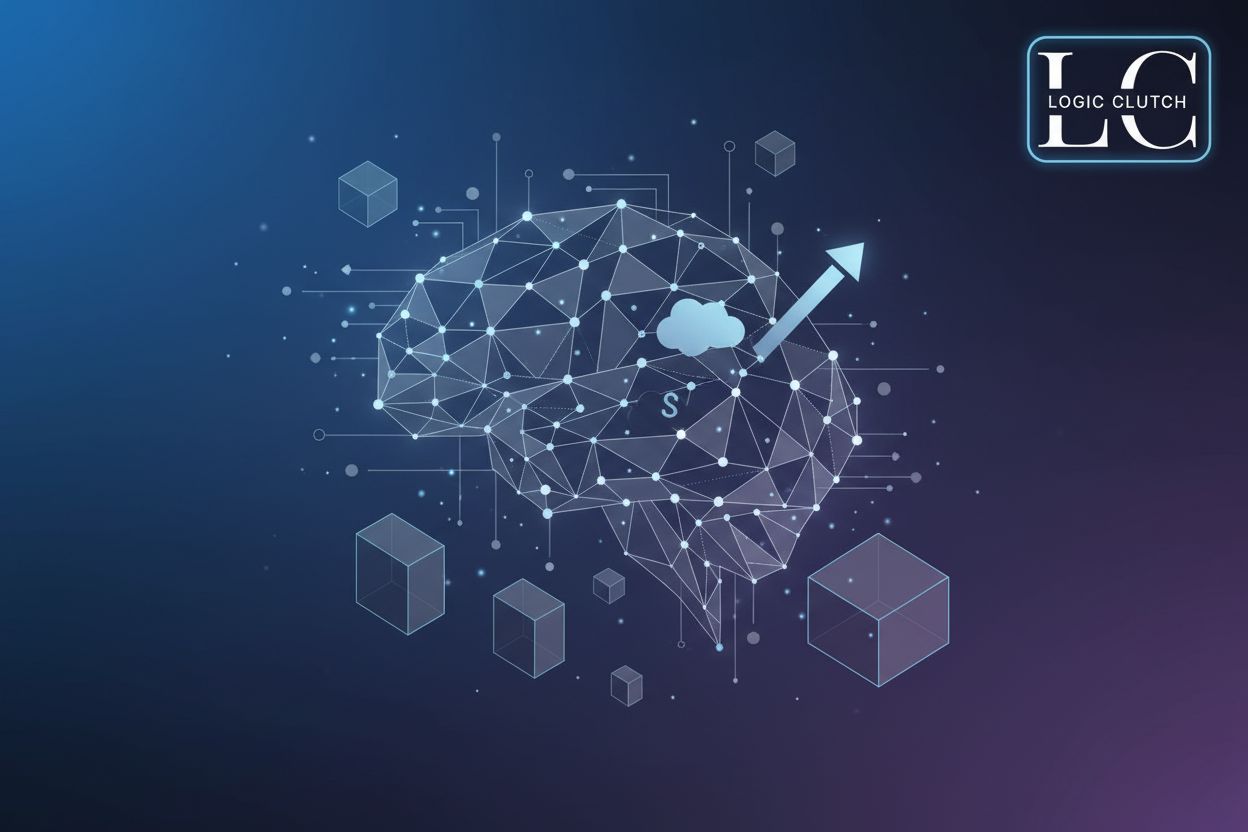Predictive Analytics for Proactive Decision-Making in Sales
TL;DR
Introduction: The Shift to Proactive Sales Strategies
Okay, let's dive into how predictive analytics is changing the sales game. I mean, who wouldn't want a crystal ball for their business, right? Turns out, data might just be the next best thing.
Traditional sales strategies? They're kinda like driving with a map from the 90s. Sure, you might get there, but there's probably a faster, better route. This means relying on outdated information, not knowing about road closures (market shifts), and generally taking way longer to reach your destination.
- Reactive sales relies heavily on historical data and, let's be honest, a lot of guesswork.
- Adapting to market changes is tough, leading to missed opportunities and inaccurate forecasts.
- But hey, we've all been there, right?
According to galaxy Weblinks, companies using predictive analytics can see up to a 20% increase in sales. (Predictive Analytics in Sales: Turning Data into Revenue - Articsledge)
Enter predictive analytics. It's like having a co-pilot who actually knows where they're going, constantly updating you on traffic and suggesting the quickest way.
- Data-driven decisions and proactive planning become the norm.
- ai and machine learning algorithms uncover hidden patterns and trends.
- Better forecasting means better resource allocation and, ultimately, more sales.
So, how does this all work in practice? Well, let's get into that next.
Understanding Predictive Analytics in the Context of Sales
Predictive analytics in sales? It's not just about guessing; it's about smart guessing, based on actual data. Think of it as giving your sales team a serious upgrade.
- It's using statistical techniques to forecast what might happen down the road.
- Key ingredients? Data mining, which is like sifting through mountains of past sales records to find hidden gems of information; machine learning, where computers learn from this data without being explicitly programmed for every scenario; and those fancy predictive models, which are the actual tools that use these learnings to make educated guesses about the future.
- Algorithms dig through old data to spot patterns, so you can see what's coming, or at least get a better idea. For example, an algorithm might uncover a pattern where sales of a certain product spike in the weeks following a specific type of marketing campaign, or that customers who buy product A are highly likely to purchase product C within six months.
It's not just gut feeling, like traditional sales forecasting is. While some traditional methods might look at past sales figures, predictive analytics uses more sophisticated techniques to identify complex relationships and predict future outcomes with greater accuracy. ai steps in to make it more accurate and handle those huge, messy datasets that would make any human analyst's head spin.
Next up, let's talk about why good data is like the fuel in this predictive engine.
Leveraging Salesforce CRM for Predictive Sales Analytics
Integrating your Salesforce crm with predictive analytics? It's like giving your sales team a turbo boost, honestly. You can finally ditch the guesswork.
- Salesforce, it's got the bones for this. i mean, it provides a solid platform for hooking up predictive analytics tools.
- api integrations and pre-built apps? they make the data flow smooth, no clunky roadblocks in sight. Think about how much time that saves the team.
- And get this: custom dashboards and reports can visualize all those juicy predictive insights, right inside Salesforce. No need to jump between a million windows, you know?
For example, you could have a dashboard showing: * Lead Conversion Probability: A list of your top 10 leads for the week, ranked by their likelihood to convert, with the key factors contributing to their score highlighted. * Customer Churn Risk: A report flagging customers who are showing early signs of disengagement, allowing your customer success team to intervene proactively. * Next Best Offer: A view that suggests the most relevant product or service to offer a specific customer based on their past behavior and similar customer profiles.
Plus, you can customize predictive models within the Salesforce environment to fit your specific business needs, like tailoring a suit, really. Developers can even cook up custom algorithms and pull in outside data sources. Tailored models means way more accurate predictions for the sales crew.
On that note, let's look at ai-powered predictions with Salesforce Einstein.
AI and Machine Learning Techniques for Sales Prediction
Okay, ever wonder if those fancy algorithms can actually predict what your customers will do next? Turns out, ai and machine learning are making some serious waves in sales prediction.
Here's the deal with ai in sales forecasting:
- Regression analysis is like predicting how high a ball will bounce based on how hard you throw it. it's used to forecast continuous values, like, say, your total sales revenue next quarter. It helps answer "how much?" questions.
- Classification algorithms are your bouncers at the club, deciding who's a vip lead and who's just browsing. Think of it as sorting potential customers into high, medium, and low-potential segments. This helps answer "which category?" questions.
- And then there's time series analysis which is all about spotting trends over time, like predicting when pumpkin spice lattes will start flying off the shelves each fall you know? It's great for forecasting based on historical sequences.
But it's not just about basic predictions, machine learning goes deeper.
- It can find connections between stuff you didn't even know existed, like how the color of your website affects buying habits.
- Clustering techniques group customers based on their behavior. For instance, it can identify a segment of customers who consistently purchase high-margin items during promotional periods, allowing for highly targeted marketing campaigns or personalized sales approaches for that specific group.
- Neural networks? those are the big guns, tackling complex predictions like "will this customer actually renew their subscription?" with impressive accuracy. This "impressive accuracy" often means achieving prediction rates significantly higher than traditional methods, sometimes in the 80-90% range or even higher for well-defined problems, leading to fewer missed renewal opportunities.
Now that we know the tools, let's see how they're actually used.
Practical Applications of Predictive Analytics in Sales
Predictive analytics in sales isn't just some buzzword; it's about giving your team the insights they need, before they even know they need 'em. Think of it as sales forecasting on steroids, using data to make smarter decisions.
- Lead Scoring: Imagine being able to pinpoint which leads are most likely to convert. Predictive models can analyze a lead's behavior—website visits, email engagement, social media activity—to assign a score. Sales teams can then focus on those high-scoring leads, leading to better conversion rates, as getaccept.com explains.
- Customer Retention: Nobody wants to lose customers, right? Predictive analytics can identify customers at risk of churning by analyzing their purchase history, support interactions, and engagement levels. Armed with this knowledge, businesses can implement targeted retention strategies.
- Pricing Optimization: Finding the sweet spot for pricing is always a challenge. Predictive models can analyze market demand, competitor pricing, customer price sensitivity, and even inventory levels to determine the optimal prices for products and services. For example, a model might suggest a slight price increase for a popular item during peak season or a discount for a product with excess inventory to drive sales.
According to dckap.com, predictive analytics helps optimize inventory management and enhance marketing campaigns. For inventory, it means forecasting demand more accurately, so you don't end up with too much stock or too little. For marketing, it allows for personalized campaigns targeted at specific customer segments most likely to respond, increasing effectiveness and reducing wasted ad spend.
So, what's next? Let's dive into how to keep those predictive models accurate and up-to-date.
Overcoming Challenges in Implementing Predictive Analytics
Okay, so you're thinking predictive analytics is a cure-all? Not so fast. Turns out, implementing it can be trickier than teaching your grandma to use tiktok.
- First up: data quality. If your data's garbage, your predictions will be too. Think of it like trying to bake a cake with sand instead of flour – ain't gonna work.
- You need to validate and clean that data like your life depends on it. Seriously, missing values and inconsistencies can throw everything off.
- Don't forget data governance. This means having clear rules about who can access what data, how it's used, and how it's protected. Regular audits are a must, and clearly defined policies can keep things in check. These audits might involve checking for data accuracy, compliance with privacy regulations, and ensuring the data used for predictions is unbiased.
Next, let's talk about how these fancy tools can actually work with the systems you already have.
The Future of Predictive Analytics in Sales: Trends and Innovations
Real-time predictive analytics? It's not just a buzzword anymore. It's kinda like having a sixth sense for your sales data, ya know?
- Instant Predictions: Real-time data streams allow for immediate forecasts, enabling quick adjustments to sales strategies. For example, if a sudden surge in online interest for a product is detected, predictive analytics can instantly alert the sales team to ramp up outreach for that item, or even dynamically adjust website promotions.
- IoT Integration: IoT devices provide a constant stream of customer behavior insights. Imagine sensors in a store tracking which displays customers linger at the longest, feeding this data into predictive models that then forecast which products are likely to sell best in the next hour.
- Responsiveness: Real-time insights mean quicker reactions to market shifts. For example, a financial firm can adjust its sales strategy based on immediate market fluctuations. Predictive analytics, by processing live market data and customer sentiment, can flag potential shifts in demand or risk, allowing the firm to quickly pivot its sales approach, reallocate resources, or offer tailored solutions to clients experiencing those changes.
Now, let's explore how these advanced systems can be understood.
logicclutch: Your Partner in Predictive Analytics Solutions
Okay, so you're probably wondering how logicclutch fits into this whole predictive analytics thing, right? Well, they're not just sitting on the sidelines, trust me.
- logicclutch specializes in custom predictive analytics solutions. They don't just hand you a one-size-fits-all package; they actually tailor it to your specific business needs. Think of it as getting a suit custom-made instead of buying off the rack. For instance, they might build a custom lead scoring model that prioritizes leads based on your unique sales cycle and customer profile, or develop a churn prediction model that factors in specific customer interaction data relevant to your industry.
- Their expertise in ai and machine learning? It's not just talk. It ensures you get accurate and actionable insights – stuff you can actually use. This could mean providing a clear breakdown of why a customer is likely to churn, or identifying the specific marketing channels that yield the highest ROI for your business.
- They're all about helping businesses optimize sales processes, boost customer engagement, and, yeah, increase revenue too. Because, let's be real, that's the whole point. They might help streamline your sales pipeline by automating lead qualification, or enhance customer engagement by suggesting personalized product recommendations at the right time, ultimately driving those revenue numbers up.
So, what's next? Let's see how they actually do all this.
Conclusion: Embracing Proactive Decision-Making with Predictive Analytics
Wrapping things up, eh? Predictive analytics, it's not just some fancy tech—it's like giving your sales team a super-power. You know, the ability to see what's coming.
- Predictive analytics enables data-driven decisions, moving away from gut feelings.
- ai and machine learning? think of them as your digital detectives, spotting trends you'd miss.
- Better forecasts mean you can finally ditch the guesswork and allocate resources like a pro.
So, what's the play here? Time to embrace this stuff and turn your sales team into a proactive, data-driven force. Trust me, you won't regret it.





